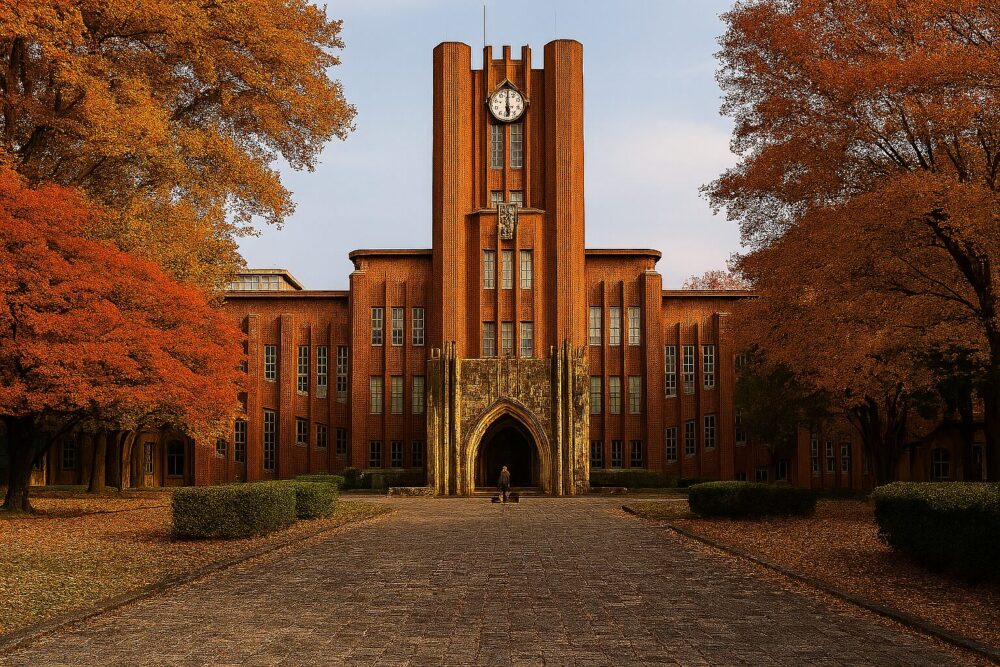Japan’s academic calendar traditionally begins in April and ends in March. However, more universities and high schools are gradually adopting September enrollment, aligning with global academic schedules. A notable example is the University of Tokyo, which will launch a new faculty in September 2027. As companies shift toward year-round hiring and interest in lifelong learning grows, this diversification of academic timelines opens new possibilities for both domestic and international students.
In 2027, the University of Tokyo will introduce fall admission for its new College of Design (CoD)—a five-year integrated program combining undergraduate and master’s studies. The goal is to create an internationally inclusive learning environment from the undergraduate level.
By aligning its calendar with institutions in Europe, Asia, and North America, the university aims to attract talented students from around the world. Japanese students will also begin in September, fostering a unified cohort experience. All first-year students will live in the same dormitory to encourage peer learning, where students teach and learn from one another across diverse backgrounds.
Designing Solutions for Global Challenges
The CoD program focuses on “design” as a framework for solving complex societal issues—ranging from public systems and digital governance to the intersection of technology and politics. Effective design requires empathy and a user-centered perspective. Tackling global challenges demands more than a Japan-centric view; it requires dialogue among students from various countries and cultures. The program will admit 100 students per year, with half being international students.
Rethinking Career Timelines in Japan
Japan’s traditional career path—entering university after high school, joining companies through mass recruitment, and advancing via seniority—offers limited flexibility. This rigid structure can hinder diverse talent. A more inclusive system allows individuals to build careers through varied experiences aligned with their life plans.
The shift toward flexible academic calendars, including September university admissions, is not just about timing—it’s about enabling broader career choices. To revitalize Japan’s economic dynamism, this transition is essential. And now is the time.
Starting with the graduating class of 2026, Fujitsu abolishes traditional mass hiring for new graduates, shifting to a year-round recruitment model based on clearly defined job roles. This job-based HR system allows the company to hire diverse talent without being constrained by preset headcount targets.
For many Japanese companies operating under membership-based employment, where seniority and years of service determine compensation, mass hiring of new graduates was an efficient system. Replacing retirees with fresh graduates helped maintain a stable age pyramid. However, under this system, HR departments focused on filling a fixed number of positions within the standard job-hunting season.
Although Fujitsu had previously claimed to offer year-round hiring, in practice it was conditional—only after securing the initial quota. As a result, students applying outside the typical recruitment process, such as returnees or PhD holders, often found the door narrowly open. Despite calls to welcome diverse talent, the internal systems were not yet equipped to support them.
Rising Demand for Global Talent
With remote collaboration across borders now commonplace, the need for professionals skilled in English and cross-cultural communication is growing. To ensure that internationally experienced candidates—such as those who studied abroad—can apply with confidence, companies must build flexible and inclusive hiring systems.
Fall Enrollment Signals Purpose-Driven Students
Students who choose fall university enrollment in Japan often demonstrate a clear sense of purpose that sets them apart. To foster a more diverse talent pool, both universities and companies must offer multiple pathways and flexible options. This includes rethinking academic calendars, recruitment cycles, and career development models to better reflect the realities of a global workforce.
Source:
Nikkei. (2025, September 14). September Enrollment in Japan: Unlocking Flexible Academic Timelines and Global Learning Opportunities.
https://www.nikkei.com/article/DGXZQOCD16CCT0W5A710C2000000/
Afterword: Adapting to Change in a Rapidly Evolving World
The world today is undergoing rapid and unpredictable transformation. With the phrase “It is not the strongest who survive, but those who adapt to change” in mind, it is clear that Japanese companies and universities must adapt to the transformation. The ability to respond to diversity—in backgrounds, values, and career paths—is likely to become a key theme moving forward.
This latest change of enrollment period is positive news for international students seeking to study in Japan. It signals a broader shift in which Japanese universities are strengthening their systems to welcome international students, offering more flexible academic calendars and inclusive learning environments. As global competition intensifies, adaptability and openness will be essential for institutions aiming to attract diverse talent and foster innovation.

